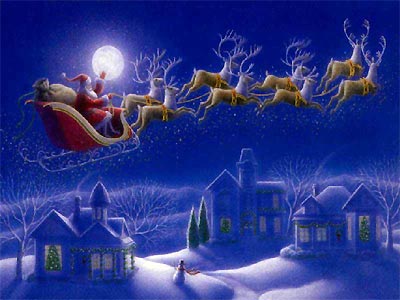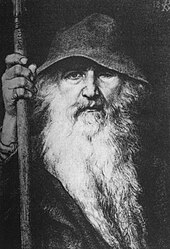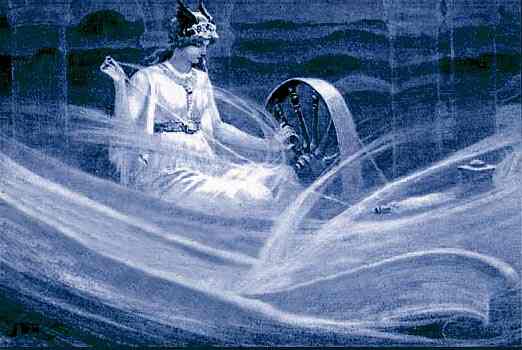
Although I very far from any apple trees in the American Southwest, I still like to make Wassail around this time of year. And then there is also the Pagan tradition of Wassailing, which I cherish (even though there aren't any apple trees).
"Wassailing" participates in the notion of living in a “conversant” world for me, something I've so often thought about as I read about folk traditions, mythologies, and old customs. Instead of seeing "nature" as "other", or a "resource", earlier times and peoples often had a mythic, friendly and "reciprocal" relationship with the extended community of life they inhabited.
“Wassailing” has a tradition of singing to trees in celebration of Christmas, or, with origins that came before the advent of Christianity, the Winter Solstice. Who is to say that the apple trees don’t enjoy being part of the festivities? How would our world be a different place if we saw apple trees as being our generous friends, or inviting bees to the funerals of those they have lived among for so long? From that perspective, one walks into one's garden or orchard or forest finding friends of all kinds - the world becomes "re-enchanted".
Like the Romans' offerings on small farm shrines dedicated to the "Numina", the spirits of place that assisted them with their crops and orchards (the indigenous Roman Goddess Pomona, whose name meant "apple", originated as a Numen of the orchards), this custom, which is still practiced with a lot of good cheer in some rural areas of England, reflects that ancient pagan sense of "reciprocity" with an intelligent, spiritually inhabited natural world.
From a lovely Blog about Wassailing in Somerset, UK, I take the liberty of sharing this:
"Wassailing dates back to Anglo-Saxon times, traditionally taking place on Twelfth Night (originally the 17 January, before the introduction of the Gregorian Calendar in 1752). The centuries-old ritual has Pagan roots and is intended to awaken the apple trees from their winter slumber. This involves blessing the orchards, reciting incantations, dancing, singing traditional songs and clattering pots and pans to scare away evil spirits and secure a bountiful apple harvest come autumn. ..........Traditions vary slightly from place to place but usually, the wassail starts at dusk and is sometimes led by a Wassail King or Queen. Branches of the trees may be hit to frighten away evil spirits, cider is often poured on the roots of the oldest tree and pieces of toast, cake or bread are put into the branches to feed the good spirits or entice robins – believed to be the ‘guardians of the orchard’. Afterwards, the trees of the orchard are serenaded with songs, Morris dancing and tasting the wassail drink."
Our ritual follows the traditional well-tried and tested ceremony of our predecessors with the Mayor in his robes of office and the Princess carrying lightly toasted bread in her delicately trimmed flasket, whilst the Queen, wearing her crown of Ivy, Lichen and Mistletoe, recites the traditional verse. The original Whimple Incantation has been retained:
Here's to thee, old apple tree, that blooms well, and bears well. Hats full, caps full, three bushel bags full, an' all under one tree! Hurrah! Hurrah!
Her Majesty is then gently but manfully assisted up the tree in order to place the cider-soaked toast in the branches whilst the assembled throng, accompanied by a group of talented musicians, sing the Wassail Song and dance around the tree. The Mulled Cider or 'Wassail Cup' is produced and everyone takes a sample with their 'Clayen Cup'.
I read recently that our habit of "toasting" may go back to Wassail revelries. "Waes hael" revelers would say, from the Old English term meaning "be well". Eventually "wassail" referred less to the greeting and more to the drink. The contents of the Wassail bowl varied, but a popular one was known as 'lambs wool'. It consisted of hot ale, roasted crab apples, sugar, spices, eggs, and cream served with little pieces of toast. It was the toast floating on the top that made it look like lamb's wool. The toast that was traditionally floated atop the wassail eventually became our "toast" - when you hold up your glass and announce, “Let’s have a toast,” or ”I’ll toast to that,” you’re remembering this very old ritual of floating a bit of toast in spiced ale or mulled wine or wassail in celebration.
Wassailing – visiting neighbors (and much appreciated, friendly trees), singing carols and sharing warmed drink – is a tradition related to the Winter Solstice with ancient roots indeed.
I found a good Wassail recipe, which I've taken the liberty of sharing at the end of this post. I don't know if I'll be going out to sing to the Saguaros this Solstice, being no longer in rural England, but who knows what I might end up doing if I drink enough Wassail with brandy.
I'm sure the Saguaros wouldn't mind the attention. Happy Wassailing!
 |
| Photo by Martin Beebee |
Compiled in The Stations of the Sun by Ronald Hutton
From the South Hams of Devon, recorded 1871:
Here's to thee, old apple tree,
Whence thou mayst bud
And whence thou mayst blow!
And whence thou mayst bear apples enow!
Hats full! Caps full!
Bushel--bushel--sacks full,
And my pockets full too! Huzza!
From Cornworthy, Devon, recorded 1805:
Huzza, Huzza, in our good town
The bread shall be white, and the liquor be brown
So here my old fellow I drink to thee
And the very health of each other tree.
Well may ye blow, well may ye bear
Blossom and fruit both apple and pear.
So that every bough and every twig
May bend with a burden both fair and big
May ye bear us and yield us fruit such a stores
That the bags and chambers and house run o'er.
 |
| Cider apples on the ground in orchard in Somerset, United Kingdom (image courtesy https://downsomersetway.co.uk/best-places-to-take-part-in-a-somerset-wassail/) |


















